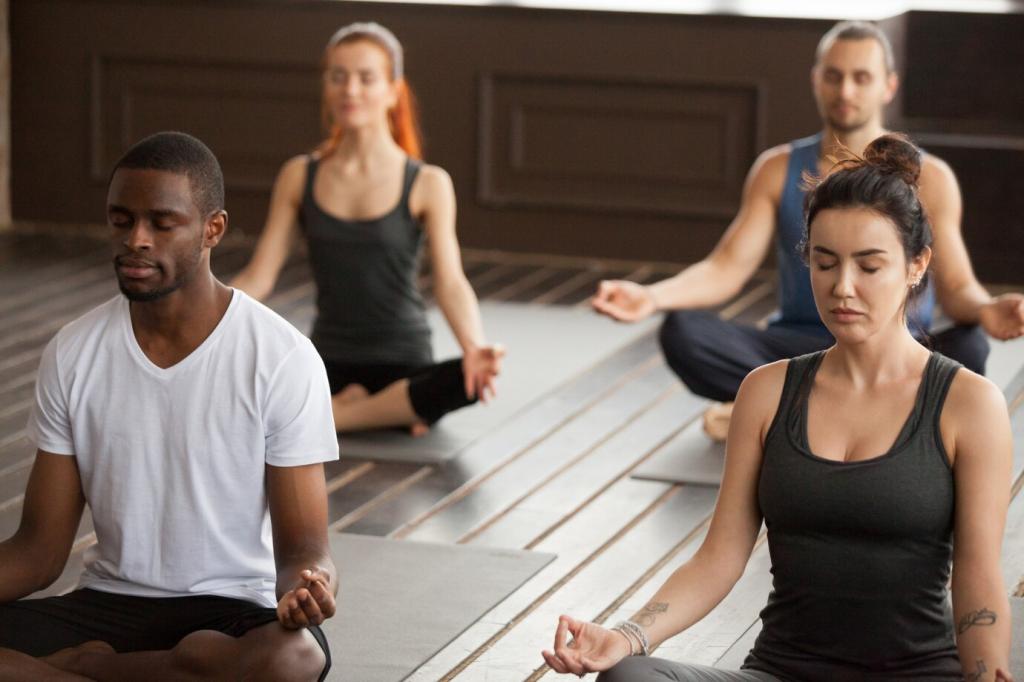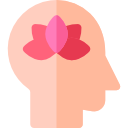
Guided Imagery for Enhanced Focus: Enter Your Clear-Mind Zone
Chosen theme: Guided Imagery for Enhanced Focus. Step into a calm, vividly imagined space where attention naturally sharpens, distractions soften, and your next purposeful action becomes undeniable. Here we blend science, story, and practical scripts to help you visualize clarity, anchor your intentions, and sustain deep concentration. Read on, try the exercises, and tell us what imagery helps you focus best.
What Guided Imagery Really Is—and Why It Sharpens Attention
01
A simple definition you can use today
Guided imagery is the intentional creation of vivid inner scenes that recruit your senses and emotions to steer attention. Instead of fighting distraction, you build a compelling mental place that invites focus, so your mind chooses presence rather than being wrestled into it.
02
How imagery amplifies the brain’s focusing systems
Rich sensory detail nudges the salience network to highlight what matters and helps the prefrontal cortex orchestrate tasks more smoothly. Like mental rehearsal before a performance, imagery primes pathways for clarity, reducing friction when you transition from intention to concentrated action.
03
An anecdote from a late-night study session
A student pictured a quiet lighthouse room above the tide, warm desk lamp, pencil tapping like waves. Five slow breaths, gaze on one glowing page, and noise from roommates faded. The image became a doorway; two hours later, the chapter was finished without struggle.
Design Your Personal Focus Script
Layer sensory detail for a believable mental scene
Start with place: a sunlit studio or alpine hut. Add sound: distant wind, a pencil’s scratch, soft piano. Include touch and temperature: a warm mug, cool wooden desk. The more believable the scene, the more your nervous system trusts it as a cue to settle and focus.
Create anchors and cues that trigger focus
Pick a keyword like “Steady” and tie it to a slow inhale, then a gentle exhale as you soften your shoulders. Touch thumb to forefinger when the scene brightens. These anchors become portable switches you can use anywhere, even in noisy offices or crowded trains.
Keep it safe, ethical, and flexible
Avoid imagery that could be triggering or overwhelming. Choose neutral, supportive scenes that encourage warmth and agency. If a visual becomes stale, swap a detail or two rather than rebuilding everything. The goal is dependable focus, not perfection or rigid routines.
A Five-Minute Morning Visualization to Prime Your Day
Sit tall, inhale through the nose, and picture a soft light widening through your chest. Exhale and let the light collect into a steady glow behind your eyes. Repeat slowly for one minute, letting the glow become the backdrop for clear, unhurried attention.
A Five-Minute Morning Visualization to Prime Your Day
Visualize opening a door marked with your first task, seeing one concrete success. Shift to a second door for task two, again picture completion. A third door closes the sequence with calm satisfaction. These quick scenes teach your mind where to land when reality begins.


Guided Imagery for Deep Work Sprints
Pre-sprint ritual: the hallway of focus
Imagine walking a quiet hallway. With each step, one distraction slides into a side room and the door closes gently. At the end, a desk by a window awaits. Sit, feel the chair support you, and place your hands on the keys. Begin only when the window scene steadies.
Mid-sprint course correction: cloud-drift technique
When you catch your mind wandering, picture thoughts as passing clouds. Label one cloud “email,” another “snack,” and let wind move them along. Your desk, sunlit and patient, remains. Return your eyes to the exact sentence or line you were shaping before the drift.
Post-sprint decompression: the bridge back
Conclude by imagining stepping off a wooden bridge into a clearing. You look back once, nod to the work done, and feel your shoulders release. This gentle closing ritual prevents mental whiplash and preserves energy for the next focused round.
Evidence Check: What Research Suggests
Studies show that imagery can enhance precision and consistency, whether practicing a tennis serve or a surgical sequence. By simulating the task, participants improve timing and control, translating imagined movements and prepared attention into measurable performance gains.


Evidence Check: What Research Suggests
Imagery engages networks linked to planning and salience detection, helping the brain filter noise and stabilize goals. Alpha oscillations often increase with relaxed focus, reducing sensory overload. In plain terms, the brain learns a familiar groove and returns there more easily.
Monday’s fog, meet a quiet rooftop studio
Overwhelmed by tickets, the developer pictured a rooftop studio at dawn, city muffled, coffee warm. With each inhale, the skyline brightened; with each exhale, one task card clarified. By lunch, the thorniest logic branch finally yielded to a clean, readable solution.
Wednesday’s fire drill, a forest path to triage
An urgent alert hit. Eyes closed, three breaths, forest path underfoot. At a fork, signs pointed to “urgent” and “important.” He followed urgent first, resolved the crash, then returned for the deeper refactor. The imagery kept panic from hijacking decisions or fragmenting focus.
Friday’s review, a lighthouse beam on lessons
He imagined a lighthouse beam sweeping across the week, illuminating commits that mattered. Not everything was perfect, but the beam made wins visible and next steps simple. He posted takeaways in chat, and invited teammates to try a five-breath image before sprint planning.
Join In: Build a Focus-Friendly Community
Share your favorite focus scene
Describe the place you visualize when concentration counts. Is it a library, seaside cabin, or early-morning studio? Include one sensory detail, your anchor word, and how quickly it helps. Post in the comments so others can borrow and adapt your approach.
Subscribe for weekly imagery prompts
Get one fresh, practical visualization each week, sized for busy schedules. We’ll include a one-minute version and a deeper option, plus a short reflection question. Subscribe, test them in your routine, and report back with tweaks that made them even more effective.
Suggest next explorations
Tell us what you want to explore: imagery for test anxiety, public speaking, creative flow, or athletic training. Your suggestions guide upcoming stories, scripts, and science breakdowns. Add your ideas now and help shape the next round of focus-building experiments.
